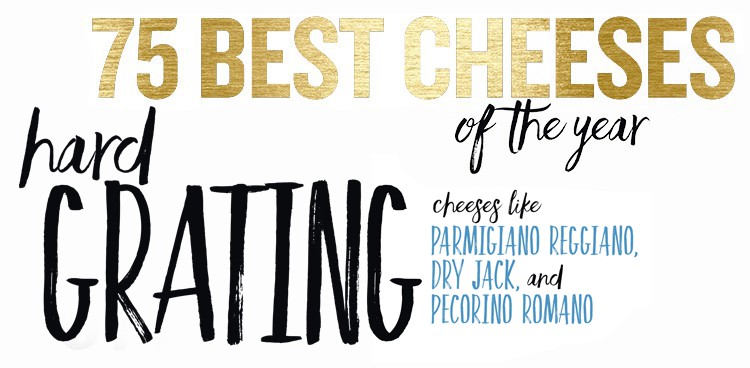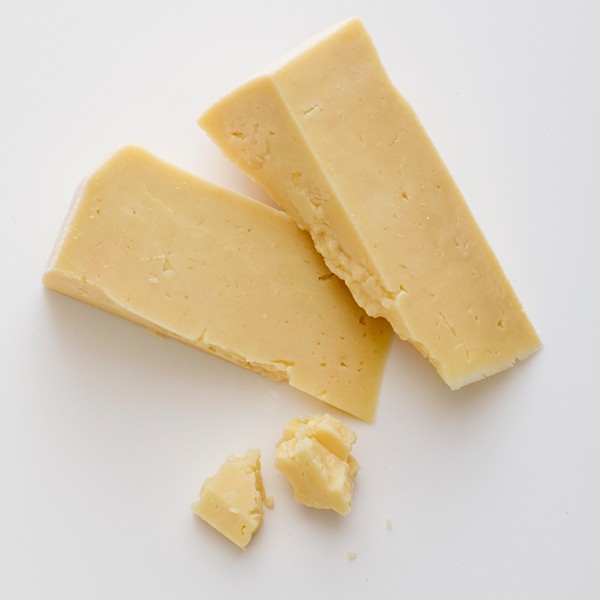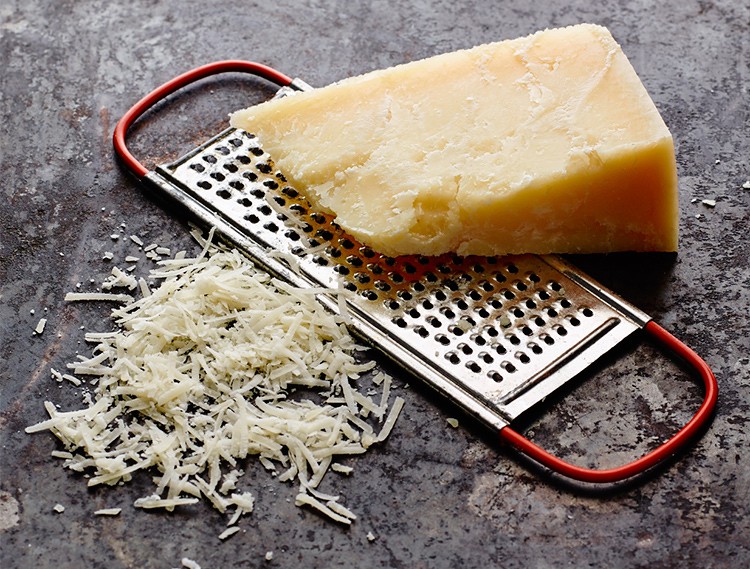
Ladies and gentlemen, get your graters and planes ready: It’s our Best Cheeses guide! In preparation for our upcoming 2016 Best Cheeses issue (on newsstands October 31!), we’ll be breaking down our expertly curated list of 75 oh-so-good wheels and wedges—the stuff of cheese dreams, really.
What’s our process? First we reviewed top finishers from some of the world’s most prestigious contests (held between September 2014 and August 2015): American Cheese Society Judging & Competition, the World Cheese Awards, the United States Championship Cheese Contest, the International Cheese Awards, the Canadian Cheese Grand Prix, the British Cheese Awards, the New Zealand Champions of Cheese Awards, and the Australian Grand Dairy Awards. Then we considered factors like style, flavor, provenance, appearance, and milk type to narrow the field and arrive at the year’s Best Cheeses, arranged by texture.
We’ve already covered soft, gooey cheeses (like Époisses and Vacherin Mont d’Or); soft, dollopy cheeses (fromage blanc, ricotta, and mascarpone, for example); semi-soft, fudgy cheeses (most blues and block cheddars); semi-soft, spreadable cheeses (fresh chèvre, Camembert, and cream cheese); semi-firm, crumbly cheeses (think ricotta salata, cotija, and Caerphilly); semi-firm, supple cheeses (including Abondance, Jarlsberg, and young gouda); firm, toothsome cheeses (such as Comté, Gruyère, and aged block cheddars); and hard, flaky cheeses (e.g. gouda and clothbound cheddar).
The very last category of our guide is Hard, Grating Cheeses. This is cheese dry enough to suck the moisture out of your mouth. A grating cheese is so hard that it is difficult to cut, and is often served as shards or shredded over a dish. Grating cheeses have such low moisture contents that they are shelf-stable. Freuently they are aged for multiple years. Examples include Parmigiano Reggiano, Dry Jack, and Pecorino Romano.

Eau Galle Aged Asiago
Aged Asiago
- Eau Galle Cheese Factory
- Durand, Wis.
- cow’s milk
An apprenticeship in Switzerland inspired Leo Buhlman to make cheese and establish Eau Galle—pronounced o-galley—in Wisconsin in 1945. Naturally, he started producing Swiss-style cheeses but over time shifted to in-demand Italian cheeses, which continue to be the company’s specialty. Currently, Eau Galle is overseen by Leo’s son, John, and operated by members of the Buhlman family, who still do things the traditional way, starting with sourcing high-quality milk from local family farms. Aged 5 to 12 months, their beguilingly complex asiago—which is slightly softer in texture than Parmigiano Reggiano—received a Best in Class nod at the 2015 United States Championship Cheese Contest.
FLAVORS: Butter, nuts, tangy
PERFECT PAIRING: Unoaked chardonnay finds harmony in the cheese’s buttery notes, but for more contrast, try a dry riesling.
Cello Riserva Copper Kettle Parmesan
- Arthur Schuman Inc.
- Turtle Lake, Wis.
- cow’s milk
Italian-inspired, Wisconsin-made: This butterscotchy, intensely savory cheese is made in the style of Italian PDO cheese Grana Padano, says Christophe Megevand, vice president of cheesemaking operations at Arthur Schuman, the company behind Cello Riserva cheeses made at Lake Country Dairy in Turtle Lake, Wis. Grainy and crystal-studded, Copper Kettle Parmesan snagged a blue ribbon at the 2015 American Cheese Society Judging & Competition.
As with the European cheeses it emulates, milk is cooked in a copper-lined vat. The reaction between metal and warmed milk fat results in a “more caramelized and very unique” flavor profile, Megevand says. He recommends chiseling off nuggets of this sweet, nutty cheese to taste with wine before dinner. “It melts in your mouth and give you an incredible trip,” he says.
FLAVORS: Butterscotch, caramelized fruit, toasted pecans
PERFECT PAIRING: Uncork a big red wine, like Barolo, to match the imposing flavors in this cheese.

Cello Riserva Copper Kettle Parmesan
Grana Padano Riserva
- Ferrari Giovanni Ossago
- Lodigiano, Italy
- cow’s milk
If you consider Grana Padano an underdog compared it to its famous cousin Parmigiano Reggiano, think again: The grateable Italian classic was named overall best Italian cheese at the recent 2015 International Cheese Awards in Nantwich, England. Ferrari Giovanni’s Riserva version, which is aged over 20 months, owes its success to many factors: quality raw milk, cheesemaking expertise, and careful maturation.
The latter phase is carried out at Ferrari, which carefully selects wheels from local dairies and ages them to perfection. This entails more than letting wheels chill out in the cave. “The oldest cheese is not necessarily the best one,” CEO Laura Ferrari says. “[The cheeses] need to be kept properly, as we do in our warehouse with patience and competence.”
In addition to maturing quality cheeses, Ferrari specializes in developing efficient methods of distribution. The company pioneered the packaged, pre-grated cheese trend in the 1970s—this year marks the 30th anniversary of its first “GranMix,” a shredded mélange of Parmigiano Reggiano, Swiss Emmentaler, and Grana Padano.
FLAVORS: Caramel, dried fruit, hay, floral
PERFECT PAIRING: Grana Padano loves honey and balsamic vinegar from Modena, Italy. For a special twist, dollop it with jam made from Mandarino Tardivo di Ciaculli, a late-season mandarin grown just outside of Palermo in Sicily.
Kolan Extra Mature
- Sirana Gligora
- Kolan, Croatia
- cow’s milk
Even the air has a salty flavor on the island of Pag—especially in the winter, when a cool, dry wind tumbles down from mountaintops and whips drops of seawater into the air. The droplets settle on the island and dry, creating a salty dust that blankets the landscape in white. This ensures that only the toughest plants, such as the resilient and fragrant Paška sage, survive here—the unique saline environment influences the local milk, which, of course, is reflected in the cheese.
Sirana Gligora recently built a new facility on the island to process milk purchased from more than 200 island shepherds, as well as from farmers throughout Dalmatia. The dairy uses a quarter of that milk to produce traditional Pag island Paški Sir, while transforming the rest into more original creations, such as this hard cow’s milk cheese. Dairy founder Ivan Gligora developed Kolan in 1996, naming it after the village where the operation is located. The robust World Cheese Awards–winning version was aged twice as long as the original—six months instead of three—deepening its subtle nutty undertones and firming up its already-dense paste.
FLAVORS: Butter, toasted nuts, grass
PERFECT PAIRING: Plate Kolan Extra Mature with plum jam and apples. Turn to Croatia for the ultimate wine pairing—a softer red, such as a cuvée from Vina Vrsaljko, specifically.

Grana Padano Riserva
Parmigiano Reggiano
- Azienda Agricola Grana d’Oro
- Cavriago, Italy
- cow’s milk
Various iterations of Parmigiano Reggiano took home a combined 22 medals at the last World Cheese Awards, but this Super Gold– clinching version topped them all. What does it take to stand out among the “King of Cheeses”? Try using the milk from a rare local breed—the Vacche Rosse, or Red Cow—as the Castellani family did to make this triumphant, 26-month-aged wheel.
First milked by monks 1,000 years ago to create the original versions of Parmigiano Reggiano, the breed was popular until after World War II, when it was gradually replaced with more economical Brown Swiss and Holsteins. The Vacche Rosse population dwindled to fewer than 1,000 in the 1980s, but today, thanks to the effort of cheesemakers like those at third-generation farmstead Grana d’Oro, its numbers are on the rise again.
“The characteristics of the cheese are particular, due to the nutritional characteristics of the milk,” says Grana d’Oro manager Luciana Pedroni. Vacche Rosse milk contains casein micelles that keep the cheese stable as it ages and ultimately aid in protein and lipid digestion. Plus, it’s rich in fatty acids that may lead to increased muscle tissue and fat loss. Products derived from the milk supplement nutrition, which is particularly important for athletes and anyone who enjoys, according to the Vacche Rosse Consortium, “an intense life.”
FLAVORS: Fruit, grass, subtly sharp
PERFECT PAIRING: Grana d’Oro manager Luciana Pedroni pours full-bodied Lambrusco with this cheese. White wine will do, too—particularly malvasia.
Pecorino Riserva del Fondatore
- Caseificio Il Fiorino
- Roccalbegna, Italy
- sheep’s milk
Caseificio Il Fiorino produces a range of pecorino-style cheeses in the village of Roccalbegna in Tuscany. The legacy of cheesemaking is important here on the province of Grosseto—where up to 65 percent of all Tuscan milk is produced. Perhaps that’s why Angela Fiorini dedicated this cheese to her father, the founder (fondatore) of the dairy she manages today. Fiorini and her husband, Simone Sargentoni, originally wanted to create a pecorino, but something larger than usual, inspired by massive wheels of Parmigiano Reggiano. Considering that kind of stature and the specific qualities of local sheep’s milk, “they thought that a special cheese would be born,” says export manager Antonella Diquattro. After much experimentation they settled on a recipe that makes 44-pound wheels of this hard and grateable, intense yet creamy cheese.
“The result was—and still is—excellent,” Diquattro says. The World Cheese Awards judges concur: They crowned the full-flavored cheese with a Super Gold.
FLAVORS: Fruit, almonds, vegetal, sweet
PERFECT PAIRING: Diquattro suggests presenting this cheese with an intense Italian red, which will stand up to its strong personality—try Morellino di Scansano or Brunello di Montalcino. Or, bake the pecorino into asparagus gratin.

Sartori SarVecchio Parmesan
SarVecchio Parmesan
- Sartori Cheese
- Plymouth, Wis.
- cow’s milk
Italian immigrant Paolo Sartori founded this family-run cheese company in 1939. Today, Sartori sources milk from the same Wisconsin dairy farmers it’s worked with for generations to produce a growing line of aged Italian-style cheeses, with an increasing emphasis on unusual rubs and flavors like citrus-ginger, espresso, raspberry, Cognac, and chai (for its award-winning BellaVitano line). The celebrated SarVecchio Parmesan—aged a minimum of 20 months, twice as long as the company’s classic Parmesan—retains a creamy texture and sweetness with minimal saltiness, making it ideal for snacking and cooking.
FLAVORS: Fruit, caramel
PERFECT PAIRING: Shred it on pasta dishes before broiling—natural sugars in the cheese create a crisp, brown crust.




